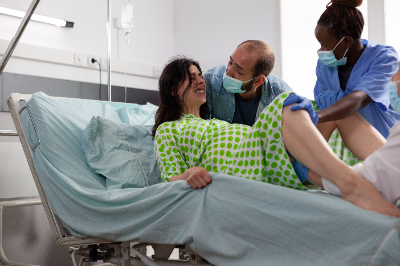Childbirth is a miraculous and challenging process that marks the beginning of a new chapter in a woman’s life. The journey of labor is filled with various stages, each bringing its own set of challenges and rewards. Understanding the stages of childbirth can help expectant mothers navigate through the process with confidence and ease. In this article, we will explore the stages of labor, common questions, and valuable tips to help you prepare for the journey ahead.
Stage 1: Early Labor

Early labor is the first stage of childbirth, also known as the latent phase. During this stage, contractions begin and gradually increase in intensity and frequency. These contractions help to dilate and efface the cervix, preparing it for the birth of the baby. Early labor can last anywhere from a few hours to a few days, depending on the individual.
Signs of Early Labor
- Mild contractions
- Backache
- Bloody show
- Water breaking
Common questions during early labor include:
- How can I manage the pain of contractions?
- When should I go to the hospital or birthing center?
- What can I expect during early labor?
Valuable tips for navigating early labor include:
- Stay hydrated and nourished to maintain energy levels.
- Practice deep breathing and relaxation techniques to manage pain.
- Keep in touch with your healthcare provider for guidance and support.
Stage 2: Active Labor

Active labor is the second stage of childbirth, characterized by more intense and frequent contractions. During this stage, the cervix continues to dilate, and the baby moves down the birth canal. This stage is often the most challenging but also the most rewarding, as it signals the imminent arrival of the baby.
Signs of Active Labor
- Stronger contractions
- Increased pelvic pressure
- Feeling the urge to push
Common questions during active labor include:
- How can I stay focused and calm during intense contractions?
- What positions can I try to help progress labor?
- What interventions may be necessary during active labor?
Valuable tips for navigating active labor include:
- Stay mobile and change positions frequently to help progress labor.
- Use comfort measures such as massage, warm baths, and breathing techniques.
- Communicate your preferences and concerns with your birth team.
Stage 3: Transition
Transition is the third stage of childbirth, marking the final phase of labor before the baby is born. During transition, contractions reach their peak intensity and frequency, as the cervix fully dilates. This stage is often the most intense and overwhelming, but it is also the shortest, signaling the imminent arrival of the baby.
Signs of Transition
- Complete cervical dilation
- Intense contractions
- Feelings of fear or doubt
Common questions during transition include:
- How can I cope with the intensity of transition contractions?
- What signs indicate that I am in transition?
- What can I expect during the transition stage?
Valuable tips for navigating transition include:
- Stay focused on your breathing and remind yourself that each contraction brings you closer to meeting your baby.
- Use visualization techniques to stay calm and centered during intense contractions.
- Lean on your birth team for support and encouragement.
Stage 4: Delivery and Postpartum

The fourth stage of childbirth is the delivery of the baby and the immediate postpartum period. During this stage, the baby is born, and the mother experiences the euphoria of meeting her newborn for the first time. The postpartum period involves the delivery of the placenta, as well as recovery and bonding with the baby.
Common questions during delivery and postpartum include:
- What can I expect during the delivery of the baby?
- How can I prepare for the postpartum period?
- What support and resources are available during the postpartum period?
Valuable tips for navigating delivery and postpartum include:
- Stay present and focused on the experience of meeting your baby for the first time.
- Communicate your preferences for immediate postpartum care with your healthcare provider.
- Lean on your support system for emotional and practical support during the postpartum period.
Tips for Navigating Childbirth

- Attend childbirth classes to learn about the stages of labor and how to cope with pain
- Develop a birth plan that outlines your preferences for labor and delivery
- Stay active and healthy during pregnancy to prepare your body for childbirth
- Communicate openly with your healthcare provider about any concerns or questions you may have
- Be open to different birthing options, such as natural birth, water birth, or cesarean section, depending on your individual circumstances
Common Questions About Childbirth
Here are some common questions about childbirth that many women have:
How long does labor typically last?
Labor can vary in length for each woman, but on average, it can last anywhere from a few hours to 24 hours or more.
What pain relief options are available during labor?
There are several pain relief options available during labor, including epidurals, nitrous oxide, and IV medications. It is important to discuss your preferences with your healthcare provider and create a birth plan ahead of time.
Can I have a natural birth without medication?
Yes, many women choose to have a natural birth without medication. It is important to discuss your preferences with your healthcare provider and prepare yourself mentally and physically for the experience.
What should I pack in my hospital bag for labor?
It is a good idea to pack essentials such as comfortable clothing, toiletries, snacks, and items for your baby. It is also important to pack your birth plan and any necessary documents for the hospital.
How can I prepare for childbirth mentally and emotionally?
It is important to attend childbirth education classes, practice relaxation techniques, and surround yourself with a supportive network of family and friends. It is also helpful to visualize a positive birth experience and stay informed about the stages of labor.
Conclusion
The journey of labor is a transformative and empowering experience that requires strength, resilience, and support. By understanding the stages of childbirth and preparing for the challenges ahead, expectant mothers can navigate the journey of labor with confidence and grace. Remember to communicate your preferences, stay connected with your healthcare provider, and lean on your support system for guidance and encouragement. Embrace the journey of labor with open arms, knowing that each stage brings you closer to meeting your precious baby.
Are you excited to embark on the journey of labor? What questions or concerns do you have about the stages of childbirth? Share your thoughts and experiences in the comments below!







































